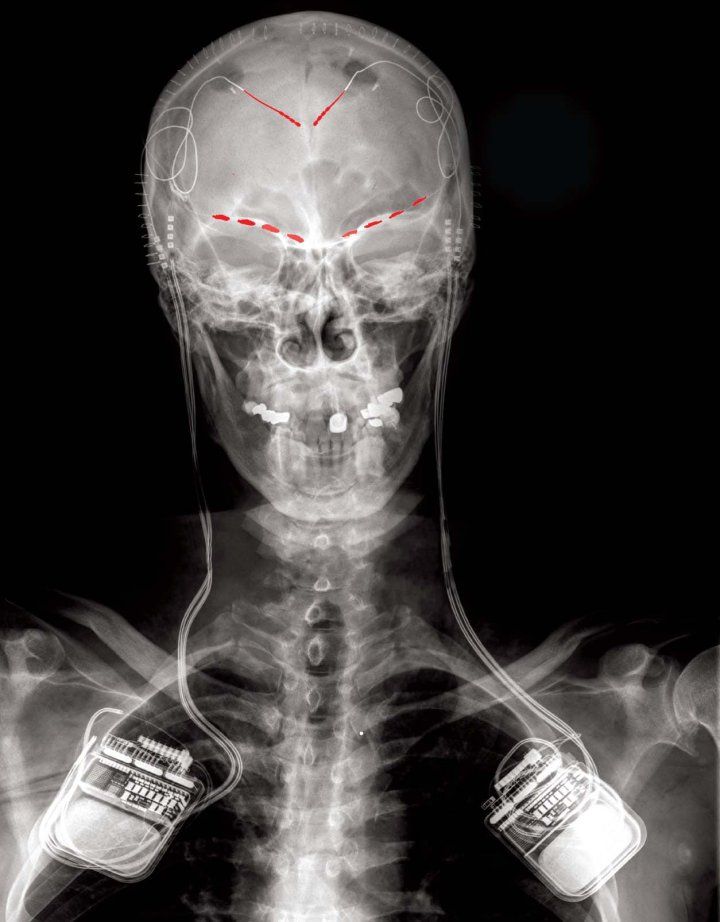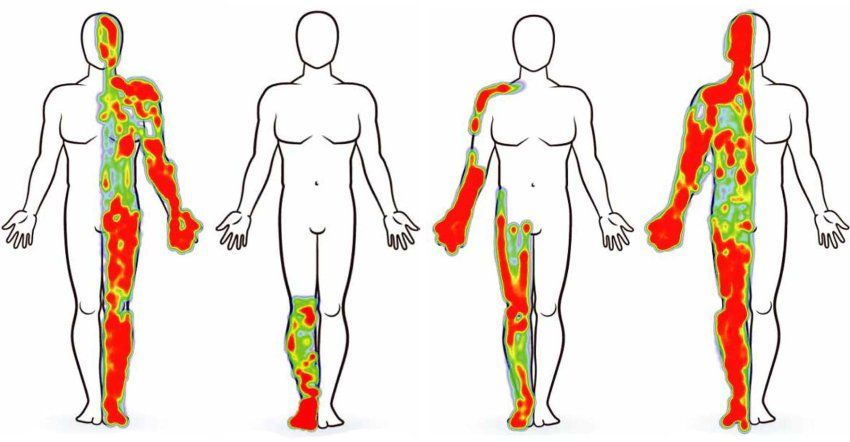If you are one of the 50 million Americans suffering from chronic pain, you've likely experienced the frustration of trying to treat a problem that has no clear cause. You may even have been told that it's in your head.
And that's partly true, but not in the way you might assume.
Today, it is widely recognized among doctors and pain scientists that chronic pain is not just an extension of acute pain, which is the normal and temporary sensation you feel after stubbing your toe or touching a hot pan. Instead, it is a separate disease where the brain's normal circuitry is rewired over a long period of time to deliver pain signals even when there's no tissue damage or other obvious pain source.
In order to target an individual patient's pain, we first need objective biomarkers of a subjective experience.
But how chronic pain is represented in the brain and how that representation differs or overlaps with representations of acute pain has largely been a mystery.
One reason chronic pain is so difficult to characterize is because the experience of pain is highly complex. It is tied not only to the somatosensory cortex, where the brain receives and processes sensory information, such as touch and temperature, but also to cognitive and emotional processing sectors of the brain. It is deeply entwined with expectation and reward circuits, as well as those related to mood and attention, all of which are constantly fluctuating based on input, environment, and individual biology.
And while pain may be universal, it's also subjective. For example, a group of people with chronic back pain may have similar-looking MRI scans, but report widely different levels of pain severity and location. Until now there has been no objective measure - what is called a biomarker - of chronic pain and how severe it might be.
"Because the way chronic pain reorganizes neural networks is so unique to each individual, we really need more personalized treatment strategies for dealing with it," says Prasad Shirvalkar, MD, PhD, associate professor of anesthesia, neurology, and neurological surgery. "In order to target an individual patient's pain, we first need objective biomarkers of a subjective experience."
It's Personal
In a new study, reported May 22 in Nature Neuroscience, Shirvalkar and his colleagues looked for those biomarkers by implanting a neural recording device in the anterior cingulate cortex (ACC) and orbitofrontal cortex (OFC) of four people (three with post-stroke pain and one with phantom limb pain).

The ACC has long been implicated in the emotional dimension of pain and is associated with that basic feeling of "unpleasantness." The OFC, which isn't as well studied, has physical connections to the ACC and growing evidence suggests that it is activated in the cognitive dimension of pain - specifically the expectation of pain and its perceived intensity.
The study participants went about their daily lives for several months and reported pain scores about three times a day that described their pain severity and how it was making them feel in that moment. Immediately after jotting down the reports, they used a remote control to record 30 seconds of neural activity from the device implanted in their brains.
Using machine learning models, the researchers were able to predict the reported pain levels with specific neural activity patterns in each patient, defining a unique neural signature for that person's pain experience. They found that signals from the OFC were more strongly correlated with episodes of chronic pain than those from the ACC.
"This is a big milestone because it's the first time that neural activity related to chronic pain has been measured in the real world over a clinically relevant time period," says Shirvalkar. "And while the biomarkers we found were specific to each individual, their location in the OFC appeared to be common across subjects."
Your Brain on Different Kinds of Pain
To compare how chronic pain and acute pain are represented in the brain, participants were also exposed to a painful heat stimulus experiment in the lab. This time, in two participants, the neural activity associated with pain came primarily from signals generated in the ACC and didn't last as long as the sustained signals seen in the OFC during the recordings that correlated with chronic pain.
Despite its small sample size, this study provides the first direct evidence that acute and chronic pain have different neural representations within the same person's brain. That evidence underlines what many doctors and patients already know: treatments that help address acute pain, such as opioids, are less likely to be effective for chronic, neuropathic pain.
Chronic Pain in the Brain
Animation showing activity in the brain that coincides with phantom limb pain reported by a subject in the study. Participants colored in a silhouette highlighting the location and degree of pain while researchers recorded the brain activity. The work provides the first direct evidence that acute and chronic pain have different representations in the brain.


Personal Maps of Pain
During the study, patients drew their own pain body diagrams. Below are diagrams from four different study participants showing the location and intensity of their pain. Green equals mild pain for the participant, while red equals severe pain. From left to right: post-stroke pain, phantom limb pain, post-stroke pain, post-stroke pain.

Neural Networks Gone Awry
The development of personalized biomarkers of chronic pain has enormous implications for future therapies. If researchers can define subtypes of chronic pain by their neural signatures, they may be able to determine which signatures respond best to different treatments.
One possible treatment would be to administer a therapeutic electrical current that disrupts the abnormal, long-lasting connections that form between neurons when acute pain transforms into chronic pain.
Chronic pain manifests very differently in different people, which makes it an especially good candidate for personalized neurostimulation.
"The device we implanted into the participants in this study is actually a deep brain stimulation device that has the capability not only to sense and record brain activity, but also to provide electrical stimulation when needed," says Philip Starr, MD, PhD, professor of neurological surgery and a senior author of the study. "The hope is that by pinpointing the specific brain signals underlying someone's pain experience, we can program the device to deliver stimulation only when those signals are detected and return the brain's pain networks to a normal, healthy state."
Starr, along with Edward Chang, MD, professor and chair of neurological surgery and another senior author of the study, has already been at the forefront of developing these personalized neurostimulation strategies for other diseases marked by neural networks gone awry, such as depression and Parkinson's disease.
"Chronic pain manifests very differently in different people, which makes it an especially good candidate for personalized neurostimulation," says Chang. "This brings us a step closer to developing a new therapy for people suffering from ongoing pain."
Funding: This study was funded by the BRAIN Initiative (UH3NS109556), NIH HEAL Initiative (UH3NS115631) and DARPA.






